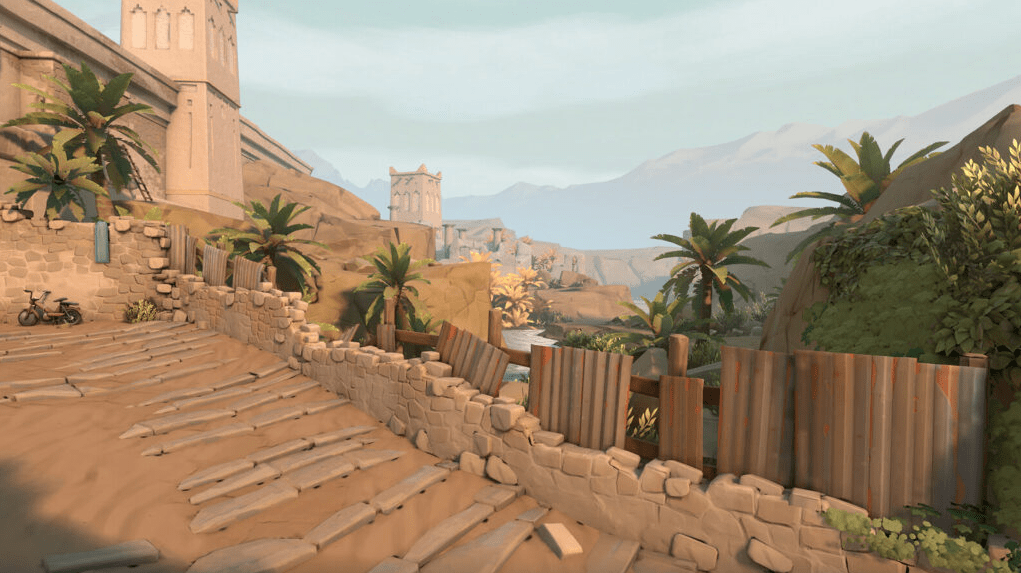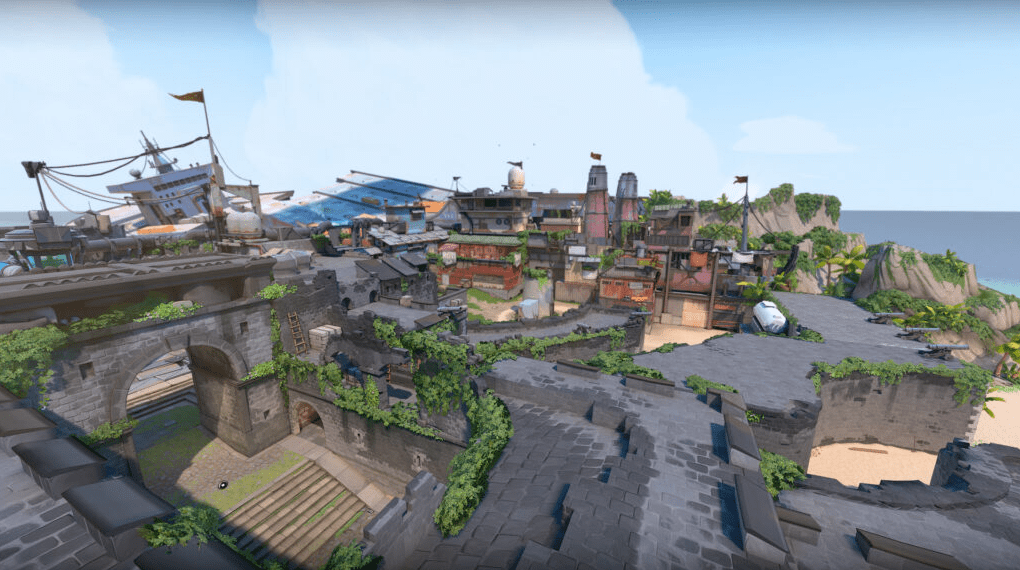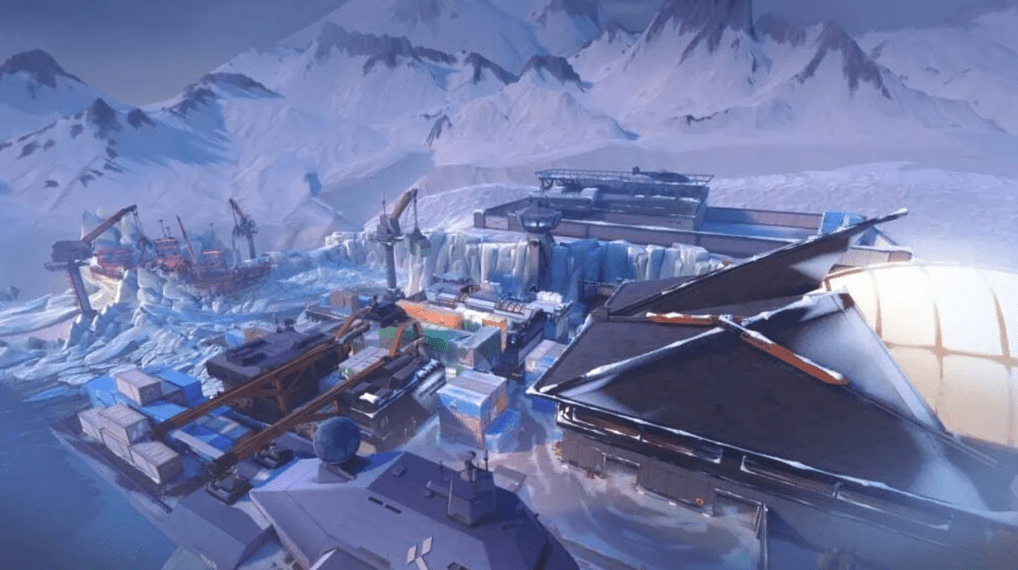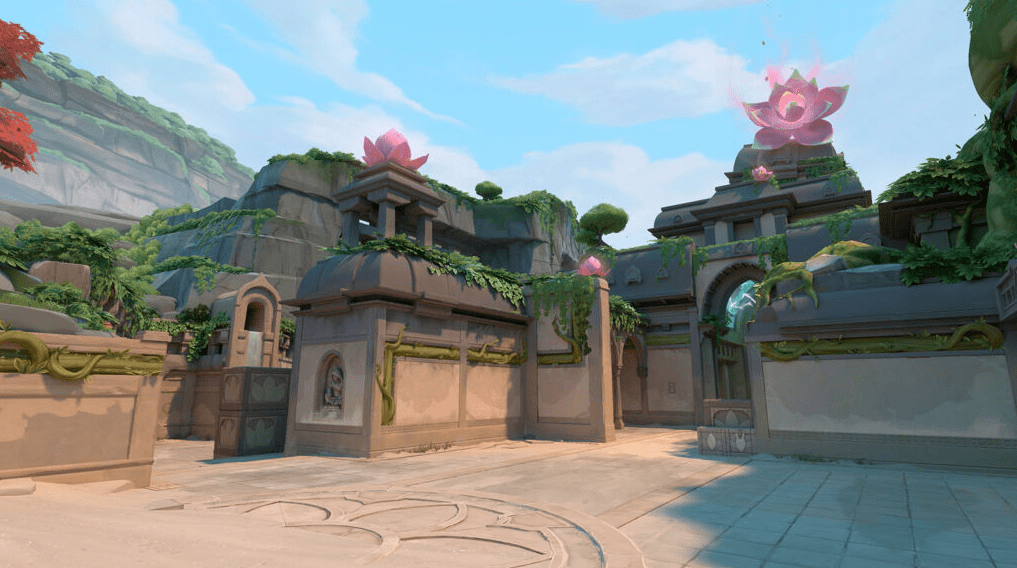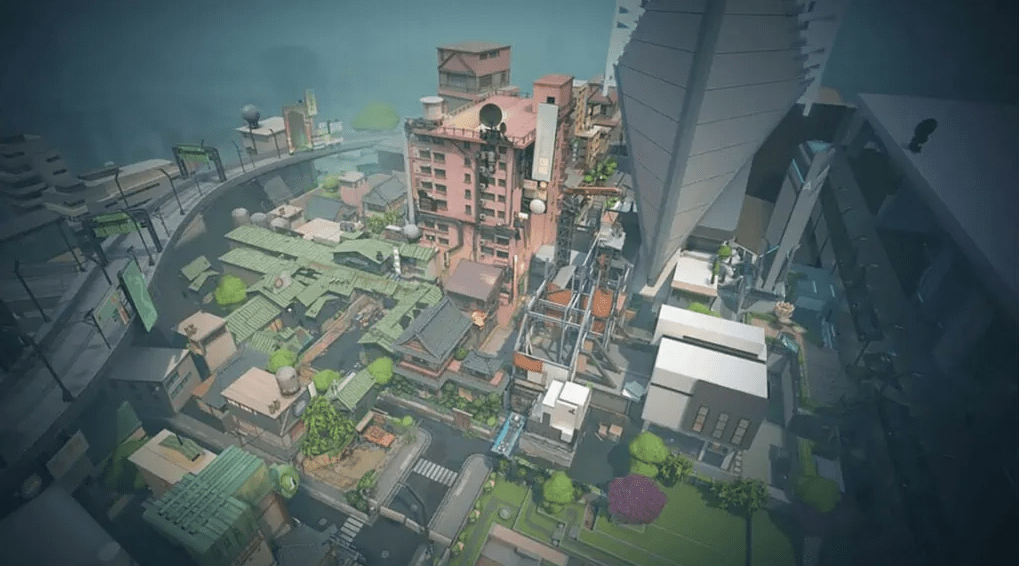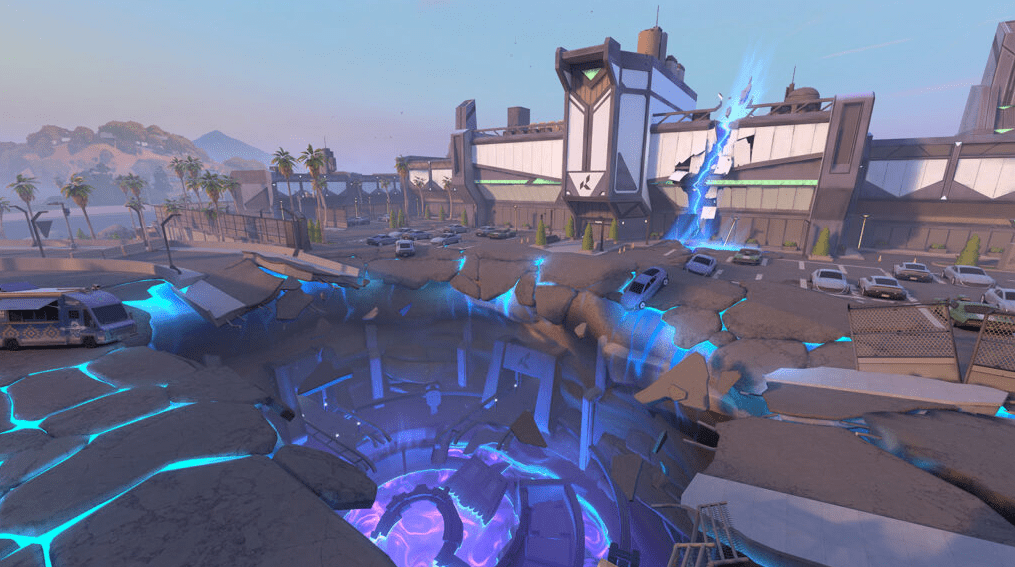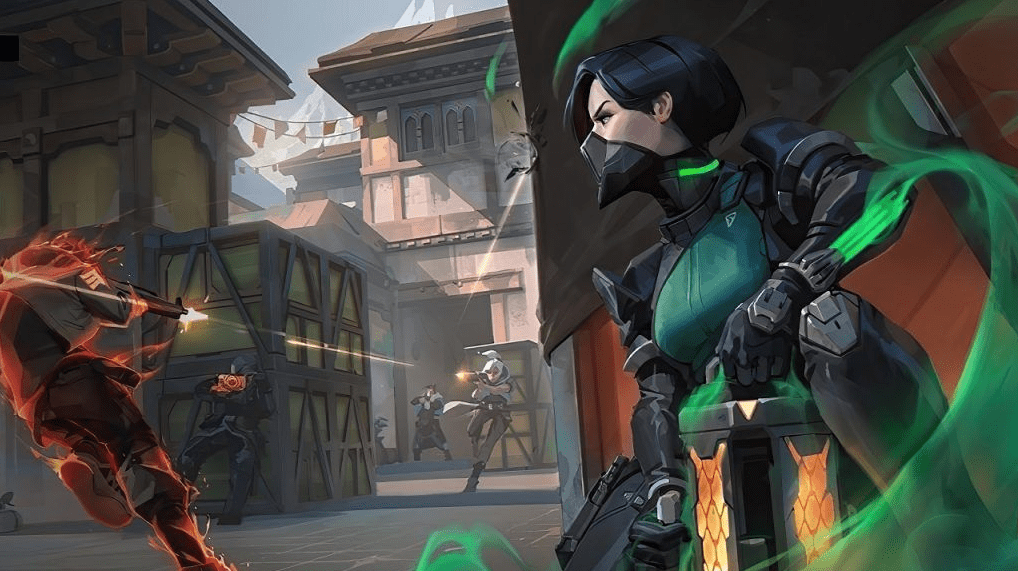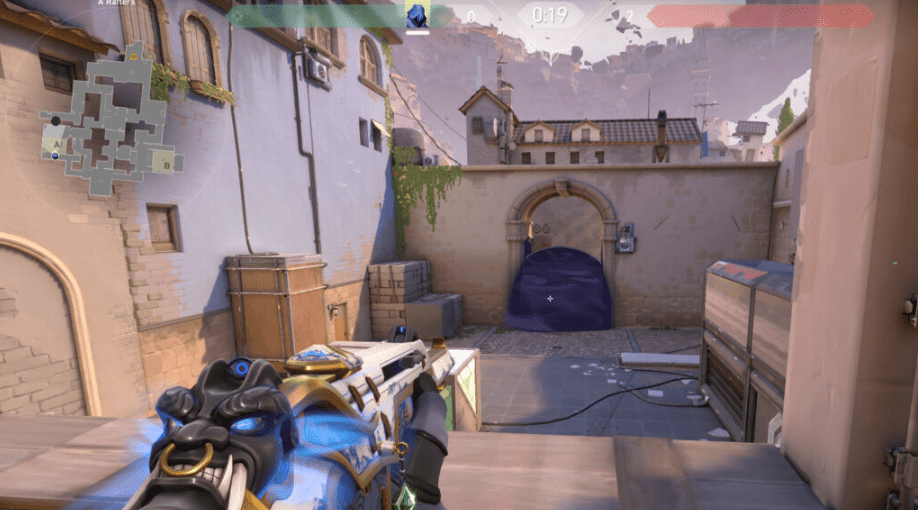Valorant Map Pool: Complete Selection of Maps in Competitive Rotation
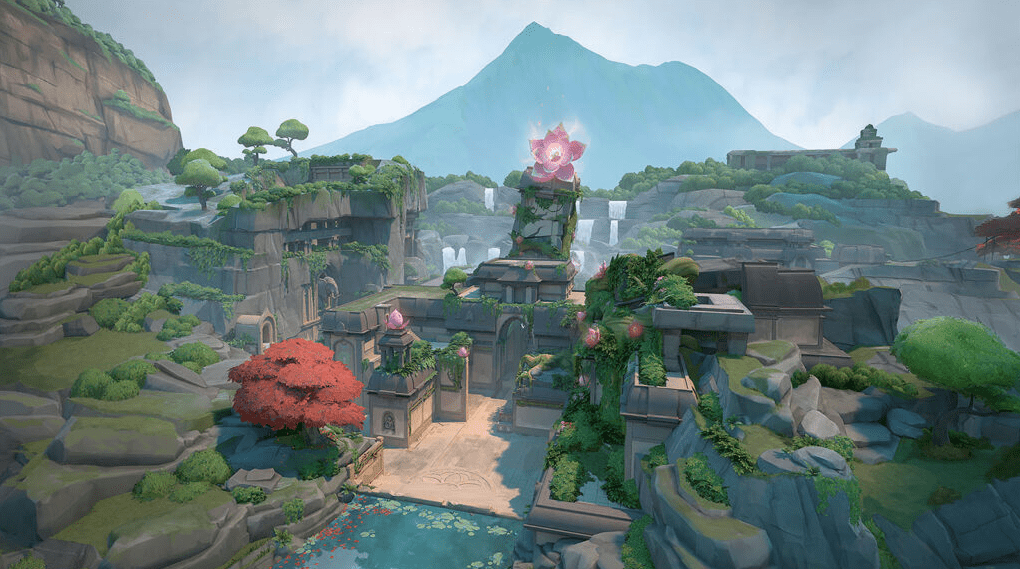
To maximize your chances of success in Riot Games’ tactical competitive shooter, Valorant, it is imperative to stay updated on the ever-evolving map pool. Having a deep understanding of the current maps in the competitive rotation can provide you with a significant competitive advantage. Aspiring to climb the ranks and improve your gameplay requires more than just mechanical skill and reflexes. It necessitates a holistic approach that encompasses strategic thinking, teamwork, and map awareness. By familiarizing yourself with the best agent compositions, effective lineups, and proven strategies for each specific map, you can make informed decisions and adapt your gameplay accordingly.
The Valorant map pool comprises a diverse range of environments, each with its own distinctive layout, sightlines, and strategic opportunities. From the tight corridors of Split to the open spaces of Bind, and from the verticality of Haven to the dynamic elements of Ascent, every map presents unique challenges and possibilities. Staying up-to-date with the map pool is essential because it allows you to stay ahead of the competition. Riot Games periodically introduces new maps and rotates existing ones out of the competitive queue, ensuring a fresh and dynamic gameplay experience. By remaining informed about these changes, you can proactively adjust your strategies, explore new tactics, and exploit any potential advantages that arise.
Table of Contents
All maps in the active Valorant map pool (update January 2024)
In Episode 8 Act 1 of Valorant, the icy battleground of Icebox made its return to the active map pool on January 10. However, during the same update, Haven was removed from the map queue, temporarily altering the available map selection for competitive play.
- Ascent
- Bind
- Breeze
- Icebox
- Lotus
- Split
- Sunset
Ascent
Ascent, one of the popular maps in Valorant, boasts an enchanting Venetian-inspired Italian design that captures the attention of players. Its meticulously crafted architecture and intricate details create a visually stunning environment that immerses gamers in a rich and immersive gaming experience. What sets Ascent apart is its well-thought-out layout, offering a balance between long-range engagements and up-close encounters. The map provides ample opportunities for strategic gameplay, allowing players to utilize different agent abilities and tactics to gain an upper hand. The sightlines on Ascent are carefully designed to cater to various playstyles. Long corridors and open spaces allow sharpshooters to showcase their precision and accuracy, while tight corners and narrow pathways create intense close-quarters battles that require quick reflexes and close teamwork.
Furthermore, Ascent’s unique features, such as the elevated platforms and multiple levels, add a verticality aspect to the gameplay. This introduces a new layer of complexity, as players need to be mindful of vertical angles and potential flanking routes. The appeal of Ascent extends beyond its gameplay mechanics. The map’s Venetian-inspired aesthetic, with its charming architecture, vibrant colors, and intricate designs, creates a visually pleasing setting that enhances the overall gaming experience. Exploring the map feels like traversing through a picturesque Italian city, adding a sense of immersion and wonder to each match. It’s no wonder that Ascent has become a fan-favorite among Valorant players. Its combination of stunning visuals, well-balanced gameplay, and strategic depth make it an enjoyable and engaging map for both casual and competitive play. Whether you prefer long-range engagements or close-quarters combat, Ascent offers a dynamic and captivating experience that keeps players coming back for more.
Bind
One of the standout maps in Valorant, Bind, captivates players with its distinctive teleporters, a feature that sets it apart from any other map in the game. The inclusion of teleporters in Bind introduces a new level of tactical complexity and strategic opportunities. The teleporters on Bind offer players the ability to swiftly traverse the map, enabling them to reposition themselves or catch opponents off guard with unexpected flanks. This dynamic element adds an exciting and unpredictable aspect to gameplay, requiring players to remain vigilant and adaptable at all times. Strategic utilization of the teleporters is crucial for success on Bind. Players must carefully consider when and where to use them, as well as anticipate their opponents’ possible teleportation routes. The teleporters can serve as powerful tools for aggressive pushes, defensive rotations, or even baiting opponents into unfavorable engagements.
Navigating the map efficiently with the teleporters demands a high level of map awareness and coordination with teammates. Effective communication and teamwork become essential in coordinating synchronized plays and executing well-timed teleportation strategies. The presence of teleporters on Bind also creates a psychological impact on players. The constant threat of an enemy suddenly appearing from a different part of the map keeps players on edge, fostering a sense of tension and anticipation throughout the match. This heightened state of awareness further adds to the immersive and adrenaline-fueled experience of playing on Bind. Moreover, the unique teleporter mechanic in Bind encourages players to explore creative and innovative strategies. It rewards those who can think outside the box and find unconventional ways to gain an advantage over their opponents. This aspect of Bind cultivates a sense of discovery and experimentation, allowing players to continually evolve their gameplay and adapt to ever-changing situations.
In conclusion, Bind’s teleporters make it a standout map in Valorant, offering players an exhilarating and strategic gameplay experience. The teleporters’ ability to facilitate rapid movement and surprise engagements adds depth and excitement to matches, ensuring that players are constantly engaged and challenged. Mastering the art of teleportation on Bind can elevate one’s gameplay and provide a thrilling edge in the ever-evolving world of Valorant.
Breeze
Breeze, the beach-themed map in Valorant, is renowned for its sprawling layout and expansive vistas. Its design presents players with the challenge of mastering long-range engagements while effectively maneuvering through its open spaces. The unique coastal setting of Breeze creates a refreshing and visually appealing environment that immerses players in a tropical paradise. The map’s wide-open areas and long sightlines encourage players to rely on precise aim and tactical positioning to gain an advantage over their opponents. Successfully navigating Breeze requires a keen understanding of map control and strategic decision-making. Players must carefully choose their routes and utilize utility to gain control over key areas while minimizing vulnerability to long-range threats.
Breeze’s vastness also allows for diverse gameplay strategies. Players can opt to engage in long-range duels, utilizing snipers or other ranged weapons to dominate from a distance. Alternatively, they can choose to take advantage of the map’s cover and utilize close-quarter combat tactics to catch opponents off guard. The open spaces of Breeze also introduce a heightened emphasis on teamwork and communication. Coordinating with teammates to secure map control, set up crossfires, and execute well-planned strategies becomes essential for success on this map. Despite its picturesque beach setting, Breeze is not without its challenges. The long sightlines and open areas leave little room for mistakes, demanding precision and careful decision-making. Players must balance aggression with caution, as overextending or failing to anticipate enemy positions can quickly lead to unfavorable situations.
Icebox
Icebox, the icy battlefield of Valorant, stands out as an intriguing addition to the map pool. One of its distinctive features is the introduction of horizontal ziplines, specifically located on the A site. These ziplines revolutionize the way players navigate the map, providing them with exciting mobility options and allowing for swift rotations and unexpected flanks. The abundance of cover on Icebox adds an extra layer of complexity to gameplay. Players can strategically utilize crates, walls, and other environmental objects to their advantage, creating opportunities for strategic positioning and clever plays. The map’s design encourages players to carefully plan their movements, utilizing cover to approach or defend objectives effectively. Moreover, Icebox breaks new ground by incorporating different levels of elevation at the plant site. This unique feature forces players to think vertically, as they must consider both the ground level and elevated positions when executing strategies. It introduces intriguing dynamics, as defenders can hold advantageous high-ground positions while attackers must find creative ways to gain control or dislodge them.
Icebox’s multi-dimensional layout challenges players to adapt their playstyles. It caters to long-range battles with its open areas and extended sightlines, allowing snipers and agents with long-range capabilities to shine. Simultaneously, the map provides opportunities for close-quarters combat in tight corridors and enclosed spaces, making it favorable for agents specializing in short-range engagements. The visually stunning ice-themed aesthetics of Icebox contribute to its immersive atmosphere. The frozen landscapes, icy structures, and chilling ambiance create a unique and captivating setting for intense firefights. Exploring the map feels like venturing into a treacherous arctic environment, adding an extra layer of excitement and immersion to each match. Icebox’s arrival in Valorant’s map pool brings a refreshing and dynamic gameplay experience. Its introduction of horizontal ziplines, varied elevations, and strategic cover placements offer a wealth of tactical possibilities for players to explore. Whether it’s executing calculated flanks, holding advantageous high-ground positions, or engaging in intense firefights, Icebox keeps players on their toes, demanding adaptability, teamwork, and strategic thinking.
Lotus
Lotus, as the second three-site map in Valorant, brings a fresh and intriguing setting to the game. It introduces a range of unique features that make it stand out among the map pool. Notably, Lotus incorporates rotating doorways on both the A and C sides, adding a dynamic element that requires players to adapt their strategies on the fly. These rotating doorways can create opportunities for surprise attacks or strategic rotations, forcing players to stay vigilant and be ready for sudden shifts in the battlefield. Additionally, Lotus presents a distinctive challenge with a destructible wall between A Main and A Link. This feature introduces an interesting tactical option for players to consider. They can choose to destroy the wall, creating new sightlines and openings for potential flanks or aggressive pushes. However, this strategic choice comes with its own risks, as it can expose players to enemy fire or telegraph their intentions. The presence of rotating doorways and the destructible wall on Lotus adds layers of complexity and strategic depth to gameplay. It encourages players to think critically about their approach, considering when to utilize the rotating doorways for positioning advantages or when to destroy the wall to create new opportunities for their team.
Furthermore, the unique features of Lotus require effective communication and coordination among teammates. Players must communicate their intentions, coordinating rotations, and timing their actions to maximize the strategic advantages offered by the rotating doorways and the destructible wall. The inclusion of these features in Lotus creates a dynamic and engaging gameplay experience. It challenges players to think strategically and adapt their tactics based on the evolving state of the map. Exploring the possibilities and mastering the intricacies of Lotus can lead to exciting and rewarding gameplay moments. In conclusion, Lotus stands as an interesting addition to Valorant’s map pool. With its rotating doorways, destructible wall, and three-site layout, it offers a unique and strategic gameplay experience. Players must navigate these features tactically, making critical decisions that can impact the outcome of each round. Lotus provides ample opportunities for teamwork, adaptability, and inventive strategies, ensuring an engaging and dynamic battlefield for Valorant players.
Split
Split stands out among Valorant’s maps due to its intricate urban terrain, which presents players with a distinct tactical experience. The map is defined by its complex layout, featuring multi-level structures and narrow passageways that require players to adapt their strategies accordingly. This unique design introduces a variety of challenges and opportunities that players must navigate to succeed. One notable aspect of Split is its verticality, which adds a new layer of complexity to gameplay. Players must become adept at traversing both elevated and ground-level positions, as engagements can occur from various angles and heights. This verticality creates intense firefights and requires players to be aware of their surroundings at all times. The multi-level structures in Split offer both advantages and disadvantages. Holding elevated positions can provide a strategic vantage point for defenders, allowing them to control key areas and catch attackers off guard. On the other hand, attackers must carefully plan their approach, utilizing utility and teamwork to overcome the challenges posed by defenders holding these elevated positions.
The tight passageways of Split add a level of claustrophobia to gameplay, requiring players to exercise caution and precision when navigating them. These narrow corridors often become hotspots for close-quarters combat, demanding quick reflexes and effective use of utility to gain an advantage. Mastering Split’s complex urban terrain requires a combination of map awareness, tactical positioning, and effective communication with teammates. Players must develop strategies that leverage the map’s verticality and utilize the tight passageways to their advantage. Coordinated pushes and well-timed rotations are crucial for success on Split.
Sunset
Sunset showcases a timeless design, featuring two spike sites and three well-defined lanes, embracing a classic approach to map layout. This traditional design provides a sense of familiarity and strategic depth for players. Additionally, the map draws inspiration from the vibrant city of Los Angeles, capturing its essence through its thematic elements. One notable feature of Sunset is the incorporation of mechanical doors, reminiscent of those found on Ascent. These doors introduce dynamic elements to gameplay, opening up new pathways or closing off certain areas based on the actions of players. The ability to manipulate the doors adds an extra layer of strategy, forcing players to adapt their tactics and make split-second decisions. The classic layout of Sunset encourages players to utilize strategic positioning and teamwork to secure spike sites. The three distinct lanes offer various approaches and angles of attack, allowing for diverse gameplay strategies. Players must carefully coordinate their movements and communicate effectively to gain control over key areas and execute successful attacks or defenses.
The Los Angeles theme adds a vibrant and captivating atmosphere to Sunset. The map’s visual design captures the essence of the city, immersing players in a lively and dynamic environment. From the iconic landmarks to the cultural elements, Sunset provides a unique and immersive setting for intense combat. Mastering Sunset requires a combination of map knowledge, strategic thinking, and effective communication. Players must analyze the layout, understand the flow of the map, and adapt their strategies based on the changing dynamics of the match. Coordinated pushes, clever use of utility, and tactical decision-making are vital for achieving victory on Sunset.
Haven
Haven distinguishes itself in Valorant by deviating from the traditional two-spike site structure and instead featuring an unconventional layout with three spike sites. This unique design sets it apart from other maps and adds an extra layer of complexity to gameplay. Players must constantly adapt their strategies and approaches to accommodate the additional spike site, creating an environment that encourages tactical creativity and innovation. The presence of three spike sites in Haven introduces new dynamics and requires players to think on their feet. Each site offers its own set of challenges and advantages, forcing teams to make strategic decisions on how to allocate their resources and coordinate their attacks or defenses effectively. This non-traditional layout keeps players guessing and demands adaptability, as they must be prepared to defend or attack any of the three sites at any given time.
The unconventional nature of Haven’s layout fosters a sense of tactical creativity among players. It encourages them to explore new strategies, experiment with different agent compositions, and devise innovative approaches to gain an edge over their opponents. The map’s unique structure opens up opportunities for unique plays and unexpected tactics, making each match on Haven feel fresh and exciting. Successfully navigating and mastering Haven requires a high level of communication, coordination, and adaptability. Teams must work together to gather information, make quick decisions, and adjust their strategies on the fly. The dynamic nature of the map keeps players engaged and on their toes, rewarding those who can think strategically and adapt to changing circumstances.
Valorant map rotation: Why only seven maps?
In the competitive landscape of Valorant, map selection plays a crucial role in shaping the gameplay experience. Each map brings its own unique layout, strategic elements, and challenges, offering players a diverse range of tactical opportunities. The seven maps carefully curated for the competitive pool provide a well-rounded selection that caters to various playstyles and preferences. By limiting the number of maps in the competitive pool, Valorant aims to strike a balance between variety and mastery. This approach ensures that players have enough options to keep the gameplay fresh and engaging, while also allowing them to develop a deep understanding of each map’s intricacies. Mastery of a map involves learning the optimal angles, lineups, and strategies that can give players an edge over their opponents. With seven maps, players can dedicate time and effort to mastering each one, refining their skills, and exploring the strategic depths that each map offers.
Moreover, a limited map pool promotes a healthy competitive environment. It ensures that the player base is focused on a core set of maps, fostering a sense of community and shared knowledge. Players can discuss and exchange strategies, improving their overall understanding of the game and enhancing the competitive experience. This shared knowledge also facilitates the growth of esports scenes and competitive tournaments, as players and teams can develop specialized strategies and showcase their expertise on a select number of maps. Additionally, a stable map pool allows developers to focus on maintaining and refining the existing maps, ensuring they are balanced and optimized for competitive play. This ongoing attention to map quality ensures that players can enjoy a consistent and fair gameplay experience across the competitive pool. While the selection of seven maps may limit the immediate variety, it creates a foundation for long-term enjoyment and growth within the Valorant community. The deliberate decision to maintain this number reflects the commitment of the development team to provide a high-quality and well-curated experience for players.

